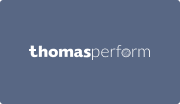“Money can't buy happiness” – a much debated quote that we hear often. When it comes to employee engagement, this phrase often rings true for many employees. So, are employee reward strategies an essential component of an effective employee engagement strategy? Yes, but they involve far more than just financial reward.
Organisations have long known that employee reward strategies encourage desired behaviours and motivate employees to perform at their best. But how should they be implemented and what should they include?
If executed incorrectly, reward systems can actually decrease an employee’s motivation and engagement, so getting it right is critical. It's important for managers to understand which behaviours they should reward, when to reward, and how to shape that reward for each individual.
Historically, employee recognition has taken the form of annual bonuses. However, this approach is seen as increasingly out-dated. Businesses now are choosing to adopt reward strategies to that are active throughout the year.
The idea being that by offering employees what they really want, they remain motivated throughout the year and strive consistently towards these rewards.
5 benefits of employee rewards and recognition
Employees who work at companies that have strong recognition systems and strategies bring significant improvements to the business.
Acknowledging employees empowers them and can help create a positive company culture, increase your revenue and more.
Here are 5 benefits of employee rewards and recognition.
1. Happy employees
Not surprisingly, rewarding employees makes them feel valued and engaged, leading to increased empowerment and job satisfaction. Employees who feel their work is generating recognition and reward are likely to enjoy that work all the more.
2. A cohesive team
Employees who are part of a well-balanced and productive team will naturally be comfortable nominating their peers for reward and recognition. Rewards often encourage staff to look for the good in each other, contrary to the belief that everyone’s in it to win it. Peer-to-peer recommendations can really boost a collaborative culture.
3. A sense of fulfilment
We all like to feel we’re doing a good job, and if we believe we can earn reward by working hard, we’re more likely to enjoy putting in the extra effort. It creates higher senses of self-worth and job satisfaction.
4. Empowered employees
Putting trust in your staff while rewarding and incentivising hard work and a strong team ethic will build loyalty and create a committed workforce. Loyal staff will instinctively enforce your organisation’s brand and place in the market and this is often visible to your potential customers.
5. Increased productivity
Engaged employees who believe in the chance of recognition are likely to work harder to achieve that recognition and reward. Companies with effective employee reward schemes tend to benefit from higher output than those without.
The risks of ignoring employee achievements
The flip side is that ignoring the needs of your employees can lead to a disengaged workforce.
Disengaged employees are more likely to negatively influence their colleagues, miss deadlines, deter potential customers and even steal from the business.
When employees are disengaged, you’re more likely to lose them and this brings additional costs such as the cost of hiring a new employee and reduced productivity from their de-motivated colleagues.
How to implement a successful reward strategy in your business
Recognising and rewarding employees can positively benefit both your employees and the bottom line of your business. The best way to optimise your rewards programme is to implement a consistent, company-wide strategy that is paired with clear objectives.
Use creative ideas. A financial reward may seem like the easy option, but many studies have pointed to non-financial incentives as being equally, if not more effective motivators. Ask your employees what incentives they would like and use this as a starting point for planning your strategy.
Communicate effectively. To convey the messages of recognition and drive involvement from the full workforce, you could utilise your staff intranet or internal social media platform. Run employee awards that are presented in front of the whole company, and/or implement a kudos system through which employees can recognise their peers.
Know and consult your employees. Only by truly understanding your people and their individual preferences, can you successfully tailor the delivery of the strategy. Don't just get their input in the set-up stages; make sure you regularly review the effectiveness of your reward scheme with your employees.
Committing time to implementing or improving an employee rewards and recognition strategy may seem like a low-priority job when you've got pressing issues with performance or conduct to deal with.
However, invest in measuring the impact of reward systems on employee performance and you may see that an effective reward system correlates with employee motivation. Your workforce will feel appreciated and recognised, more motivated and committed, and ultimately create a high-performing organisation.
5 things your employee reward system must include
Employee recognition awards can take many forms; however, certain features are key and you should consider these carefully.
1. Say thanks
Many high-performing companies have systems in place for staff to send thanks to each other, whether it’s an e-card or a public show of appreciation. It’s a very simple but effective way to make employees feel valued and to raise awareness of an individual’s achievements.
2. Recognise your colleagues
Peer-to-peer rewards allow employees to show team members how much they’re valued, so really add to motivation and collaboration. Going beyond recognition from senior leaders, giving and receiving acknowledgment from your associates can massively boost morale.
3. Ongoing recognition
Staff shouldn’t have to wait till the end of the month or even the end of the year to get the recognition they think they deserve. An ongoing recognition programme incorporates the ability to dish out instant rewards and allows timely celebrations of employees’ accomplishments.
4. Include a variety of rewards
Make sure you offer different levels of reward for recognising different achievements so that employees remain motivated to attain more. Also, staff will value different incentives – one may appreciate a shopping voucher while another may enjoy an additional leave day. It’s not a case of one size fits all, a reward system should encompass a range of advantages and always offer something new to strive for.
5. The “gold watch”
You might not want to hand out gold watches for long service these days, but you get the idea. Recognising long-term commitment to an organisation should be highly valued as retaining good people saves the time and cost of hiring and developing new staff. Incentivising employees to stay on could raise productivity and profits.
Use Thomas Engage to inform your employee reward strategies
At Thomas, we use the Thomas Engage model to help us shape our strategy. This model reinforces that reward also covers non-monetary elements such as recognition in the form of praise and appreciation, or opportunities for growth and development, but each of these are required to be tailored to the preferences of the individual employee.
We’ve found that the best way to manage this is through comprehensive 1-1 meetings, held on a regular basis, between the employee and their line manager. These meetings are an opportunity to discuss not only performance (so there are no mid-year or year-end surprises), but also help ensure that the manager is aware of the employee’s general satisfaction levels in the workplace. Only by having comprehensive meetings can a manager fully understand his or her people, and therefore ensure they provide a workplace environment in which each individual can prosper.
Remote workers actively use webinar or online meeting technology to ensure a 1-1 is never missed and that every employee is receiving the same level of support. Our workforce is diverse and what drives productivity, wellbeing and overall job satisfaction will be equally distinctive. To help our managers ensure they are covering all bases, we provide them with a structured 1-1 template that employees complete and share with their line manager in advance of their meetings. This gives the manager time to read through the comments and allows them to enter into a constructive and helpful discussion tailored to the individual employee’s levels of motivation and aspiration, as well as discussing their activity and performance levels.
At Thomas, managers review the seven drivers of the Thomas Engage model during monthly 1-1s with their reports, and open up discussions around how to improve on these. This includes looking at reward, which gives the employee the chance to offer how they would prefer to be rewarded and recognised, and allows them to share their current feelings towards the effectiveness of this driver in Thomas each month. This helps us to focus our reward strategy and make improvements month on month.
To find out how you can improve your employee reward strategies with Thomas Engage, please speak to one of our team.



